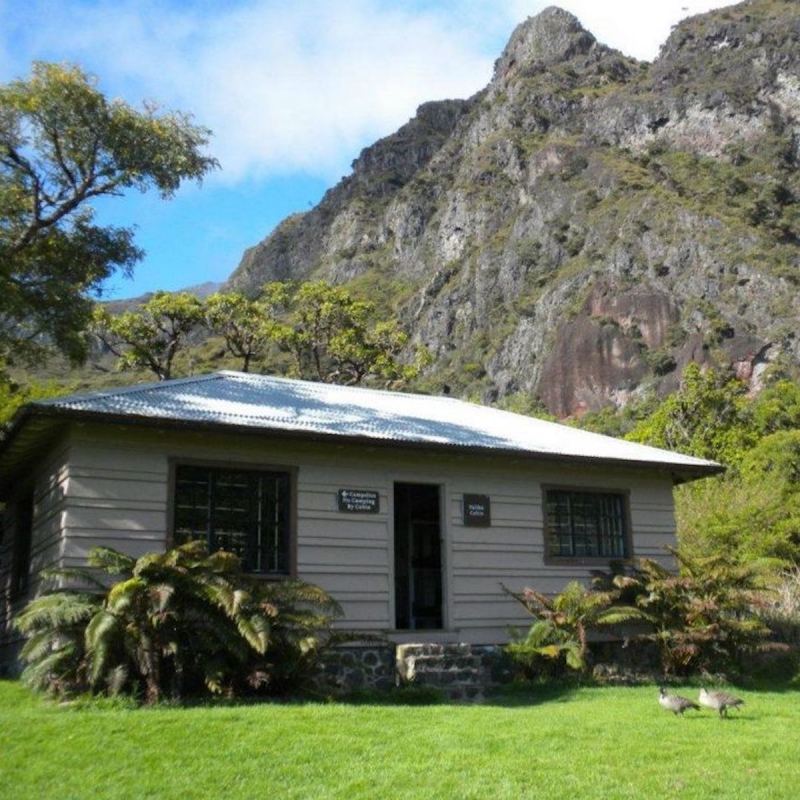
The first director of the National Park Service, Stephen Mather, had an idea to entice newcomers into the backcountry for their first wilderness experience — give them a destination with a roof over their head, even a prepared meal, and a comfortable bed. It’s the wilderness, but a bit less wild.
Videos by TravelAwaits
The National Park Service worked to develop Mather’s dream in a couple of venues and expanded on it in a few others.
After the initial surge of backcountry lodging opportunities created in the early days of the parks, today overall they are rather few and far between. They run the gamut from sleeping on plywood to a surprising degree of luxury.
I’m a retired park ranger, having spent a career working at parks across the country. I’ve put together a list of backcountry lodging in national parks that, to varying extents, fulfill Mather’s goal — or at least provide a roof on a rainy night.
These places aren’t easy to access. They’re special because of that.
For just about all, reservations are required — months in advance, and some by lottery. You may need to get a backcountry permit from the NPS before you set out. The facility’s website will remind you about this. And if you’re not used to traveling in the wilderness, you’ll want to check the park’s website to learn appropriate safety and leave-no-trace hiking measures.
And, of course, the changing COVID-19 situation has meant some facilities have temporarily closed, or are operating on a restricted basis. Reopening will affect demand and availability.
Whenever you plan to travel into backcountry lodging, you’ll want to plan your lodging the night before your trip into the backcountry, and the night you come out. These generally shouldn’t be big travel days.
Now let’s head into the backcountry.

1. High Sierra Camps, Yosemite National Park
Yosemite’s High Sierra Camps were the direct implementation of Steven Mather’s vision. They are a series of five camps, 7–10 miles apart: Glen Aulin, Vogelsang, Merced Lake, Sunrise, and May Lake. The spacing is arranged so that travelers could hike from one to the next with only a daypack, not a heavy backpack, on a 50-mile loop.
They can also be accessed individually without making a loop on shorter hikes from Tioga Road. And they can be visited as part of a guided tour on horseback. (If you’ve never ridden 7 miles on a horse, this is probably not the time to gain that experience.)
Accommodations are in tent cabins — large canvas structures with doors and windows on solid floor — the same style of lodging you’ll find in Yosemite Valley’s Curry Village.
Bedding, towels, and sit-down family-style breakfast and dinner are provided. Box lunches are available. There are hot showers, laundry, and the restrooms have flush or composting toilets.
This is the Yosemite high country. Elevations range from just over 7,000–10,000 feet, so you need to be in good shape, have good footwear, and bring seasonally appropriate clothing. Because of the elevation, the operating season is June through September.
Each camp has a distinctive feature or two nearby, perfect for an excursion from the camp. For this reason, I like May Lake. It offers a side trip to Mt. Hoffmann. Hoffmann is pretty much smack dab in the center of Yosemite, and the panorama from its 10,855-foot summit is unforgettable.
2. Bearpaw High Sierra Camp, Sequoia-Kings Canyon National Park
Bearpaw is Sequoia-Kings Canyon’s version of Yosemite’s High Sierra Camps. Built in the 1930s, the camp was based on Yosemite’s experience, and envisioned by the park superintendent as a way to draw visitors into the high country and away from the Giant Forest area.
And like its Yosemite cousins, Bearpaw offers tent cabins, bedding, towels, meals, showers, and restrooms.
Bearpaw High Sierra Camp is an 11.5-mile hike-in, and sits at 7,800 feet, so the same caveats apply as with Yosemite regarding the need to be in good physical condition, have good footwear, and the need for seasonally appropriate clothing. It has the same limited operating season, June through September.
There is always more to learn about both Sequoia and Kings Canyon National Parks.

3. Phantom Ranch, Grand Canyon National Park
So the Sierra hikes aren’t enough for you. Take the hike down to the bottom of the Grand Canyon and stay at Phantom Ranch. It’s not the 7+ mile hike that’s a factor in keeping Phantom Ranch its own separate world, it’s the nearly 5,000-foot elevation change. (There are a few hiking options. One is to go down the Kaibab Trail, then up the longer, less-steep Bright Angel trail.)
Phantom Ranch dates back to the 1920s, and is the park’s only lodging below the rim. It’s on the north side of the river, near the Bright Angel trailhead.
Phantom Ranch is available to hikers and those who visit by mule or raft trip.
There are two types of lodging: dormitory (two for men, two for women) and cabins. Both are heated in the winter and cooled in the summer.
Bedding and towels are provided (cabins have cold water and there’s a central shower facility nearby with hot water).
There’s also food available, and facilities are being renovated.
And if you want to travel light, there’s a service to haul your duffel bag down and back up, for a fee.
The Grand Canyon is a park of seasons. The North Rim is closed in the winter, and trails on the South Rim can have snow and ice in places. Summer heat can be extreme. But a well-timed, well-planned trip for those in good shape can leave you with memories that will last forever, and burning thighs that will get better after a nice warm bath.

4. Wilderness Cabins, Haleakala National Park
While most visit Hawaii for the beaches, consider a trip to Haleakala for the unforgettable experience of hiking and sleeping in the cool wilderness atop a volcano.

Three primitive cabins — Kapalaoa, Hōlua, and Palikū — built in the 1930s, are available with reservations in the summit crater of the Haleakala volcano on Maui.
Let me emphasize the word “primitive.” When you visit, you’re going to need to bring your own food and bedding. It’s a good idea to bring a cookstove if you don’t want to rely on the propane stove in the cabin. There are mattresses provided. There’s usually firewood available in a locker. Gathering wood is not allowed.
The cabins sit above the 6,000-foot level. Depending on the cabin, the hike-in ranges from 4–10 miles.
The weather ranges from perfect, to perfectly miserable. The highs don’t get much above 70, and nights are cool (50s) to downright cold (30s). It can be rainy, windy, foggy, even snowy. Be prepared for changing weather.
The environment is unique and especially fragile. Follow park guidance to protect it.

5. Backcountry Cabins, Wrangell-St. Elias National Park and Preserve
Speaking of primitive, let’s talk about the 14 backcountry cabins at Wrangell-St. Elias in Alaska.
This isn’t Stephen Mather’s vision of an easy-access wilderness experience.
Bring your own everything, including toilet paper. Are you afraid of mice? Too bad. The cabins are unstaffed, unsupplied, and unmaintained. This is the Alaska wilderness. The cabins were built by hunters, trappers, and miners before the land was a park.
Let’s talk remoteness. Access for most of the cabins is by air.
So how are you supposed to get there? The park’s website has a list of authorized guide services that will fly you in, fly you out, and plan a trip according to your interests, from fishing to hiking.
Guides can help sort out the right places to visit, the right time to travel, and make planning a trip to a remote and faraway wilderness location surprisingly easy.
Wrangell-St. Elias is America’s largest national park. If you’re going to see Alaska, this is about as authentic as it gets.
6. Public Use Cabins, Yukon-Charley Rivers National Preserve
If you don’t like the word “rustic,” let’s try “primitive.” The seven public-use cabins on the Yukon River provide a primitive lodging experience for those traveling downriver.
Check the park’s website for a list of guide services with permits to operate in the park. They’ll take you on a river trip for 100 miles down the Yukon River. It’s almost a trip back in time. Whether you camp or spend the night in one of the park’s backcountry cabins, it’s going to be amazing.
If you’re looking to escape crowded national parks that seem to be in the news almost every day, this is the way to do it. The moose will outnumber the people.

7. Sheldon Chalet, Denali National Park
OK, enough of this rustic, primitive stuff. Let’s end this with a first-class, no-expense-spared trip of a lifetime.
Sheldon Chalet is on an island of private land surrounded by Denali National Park, perched on a ridge surrounded by glaciers, and just 10 miles from the summit of Denali.
Access it by helicopter. On arrival, the staff welcomes you with a champagne reception.
Your hosts will equip you for glacier exploration, snow caverns, and even ice climbing. Or just watch Denali from the sauna.
Boxed lunches? No. Finer dining than you experience at your favorite restaurant, with fresh local ingredients from the wild, and an unmatched ambiance? Yes.
Technically, it’s not on NPS-owned land, so it’s not in the park, just surrounded by it. But technically, it’s one of the most amazing 5-star adventures in the world.
Director Mather probably wouldn’t endorse Sheldon Chalet as a fulfillment of his vision. But he’d probably be the first one on the helicopter to visit.
Enjoy reading about national parks? Check out these articles:
